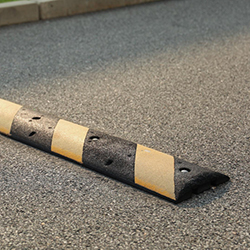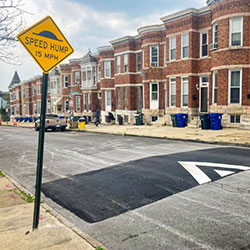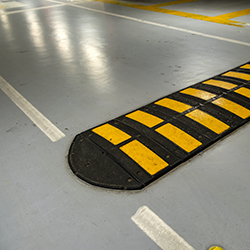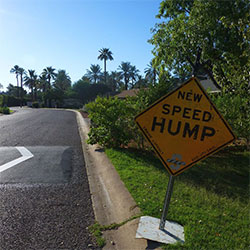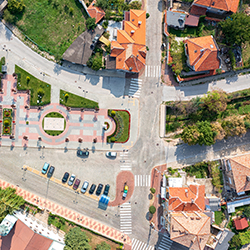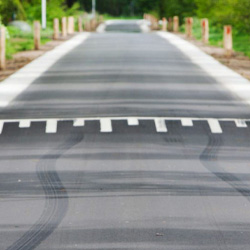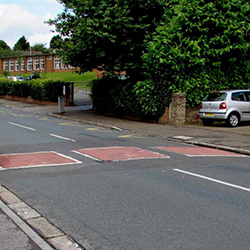The Role of Speed Bumps and Humps
Speed bumps and humps are essential tools in the traffic calming toolkit. They serve to slow down vehicles in areas where lower speeds are necessary for safety and quality of life. These devices are particularly common in residential areas, school zones, and near parks where pedestrian traffic is high.
Speed bumps are abrupt and intended for low-speed areas, while humps are gentler and can be used on streets with a wider range of speeds. Both are designed to be noticeable enough to encourage drivers to reduce speed without causing undue discomfort or vehicle damage.
Continue reading “The Role of Speed Bumps and Humps” »
Understanding the Critical Distinctions Between Speed Bumps and Humps
Comparative Analysis: Bumps vs. Humps
Physical and Functional Differences
Speed bumps and humps serve similar purposes but differ significantly in their design and impact on traffic. Speed bumps are abrupt and high, making them more suitable for low-speed areas such as parking lots and driveways. In contrast, speed humps are gradual and spread out, designed to slow down vehicles over a longer distance, which makes them ideal for residential streets. Continue reading “Understanding the Critical Distinctions Between Speed Bumps and Humps” »The Anatomy of Speed Bumps
Defining Characteristics of Speed Bumps
Speed bumps are primarily designed to slow down vehicle traffic in areas where pedestrian safety is a high priority. These traffic calming devices are typically made from asphalt, concrete, or rubber and have a rounded shape.- Height: Generally, speed bumps are between three to six inches high.
- Width: They extend across the width of the road, usually less than a foot wide.
- Spacing: The distance between speed bumps can vary, but they are often placed at intervals that require vehicles to reduce speed consistently throughout the area.
Assessing Your Community’s Needs
Analyzing Traffic Patterns and Problem Areas
To effectively address traffic concerns, communities must first conduct a thorough analysis of traffic patterns and identify problem areas. This involves collecting data on vehicle speeds, volumes, and types at different times and days. Key steps in this process include:- Mapping out high-traffic zones and accident-prone intersections.
- Observing peak traffic hours and determining the causes of congestion.
- Surveying pedestrian and cyclist activity to understand their impact on traffic flow.
Choose Wisely the Right Traffic Calming Device
Traffic calming devices are essential tools for enhancing the safety and livability of neighborhoods. They serve to slow down traffic, making streets safer for pedestrians, cyclists, and local residents. The primary goal is to reduce the negative impacts of motor vehicle use, alter driver behavior, and improve conditions for non-motorized street users.
Continue reading “Choose Wisely the Right Traffic Calming Device” »
Exploring Speed Humps: Design and Functionality
Speed humps are engineered with a more gradual slope than speed bumps, allowing for a smoother transition for vehicles. Their elongated design is intended to reduce vehicle speeds over a longer distance without causing significant discomfort to drivers or passengers.
Continue reading “Exploring Speed Humps: Design and Functionality” »
Understanding Speed Bumps: Characteristics and Usage
Speed bumps are raised areas of pavement typically designed to slow down vehicles on roadways. They are often installed in residential areas, parking lots, and near schools to ensure pedestrian safety.
The dimensions of speed bumps can vary, but they generally range from two to six inches in height and one to three feet in width. The height of the bump plays a crucial role in its effectiveness, as higher bumps force drivers to reduce their speed more significantly to avoid discomfort or vehicle damage.
Continue reading “Understanding Speed Bumps: Characteristics and Usage” »
What to Know About Speed Bump Dimensions
Speed bumps are essential tools for traffic calming, designed to slow vehicles in areas where pedestrian safety is a concern. The standard height for speed bumps is typically between three to six inches, while the width can vary from one to three feet. These dimensions are crucial for ensuring that the speed bumps effectively reduce vehicle speeds without causing damage to vehicles or discomfort to drivers.
Continue reading “What to Know About Speed Bump Dimensions” »


